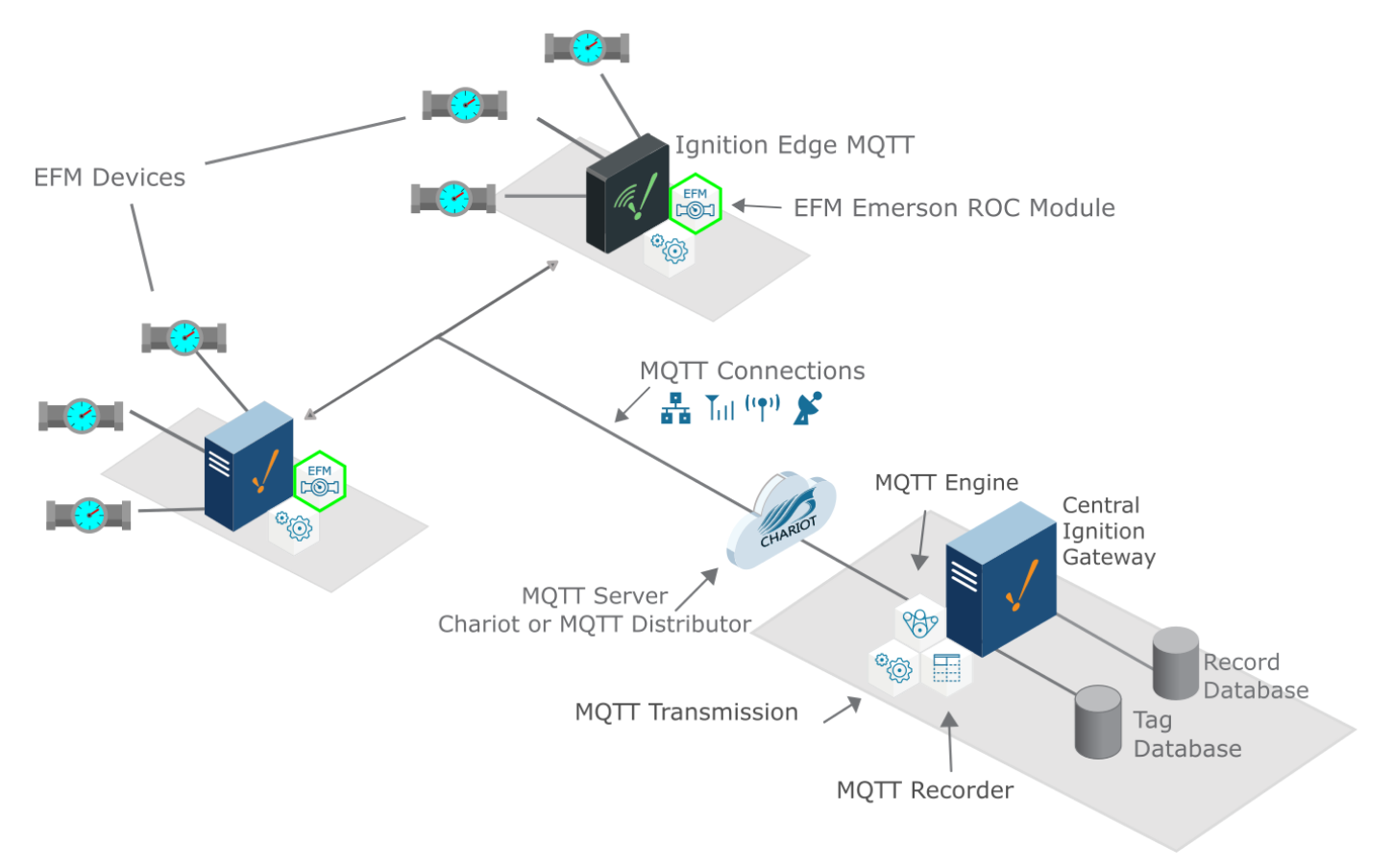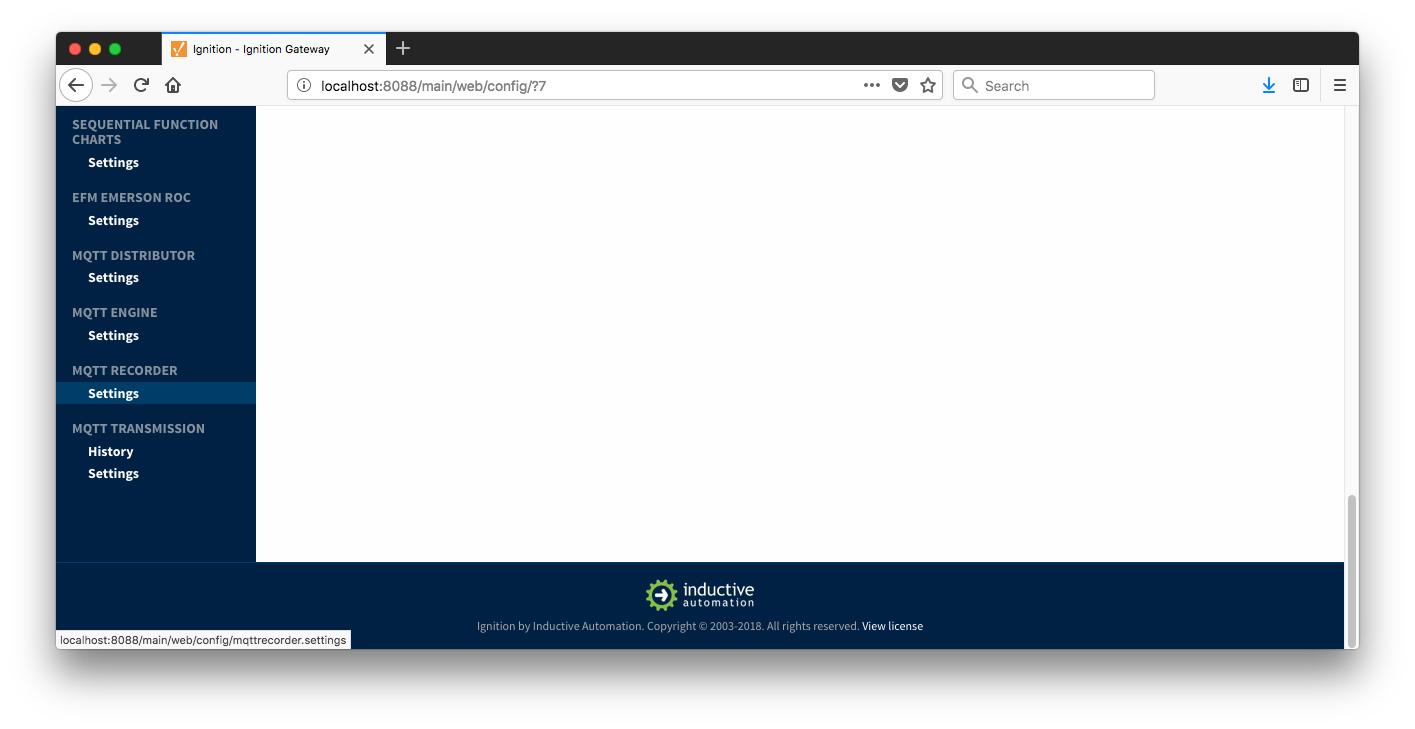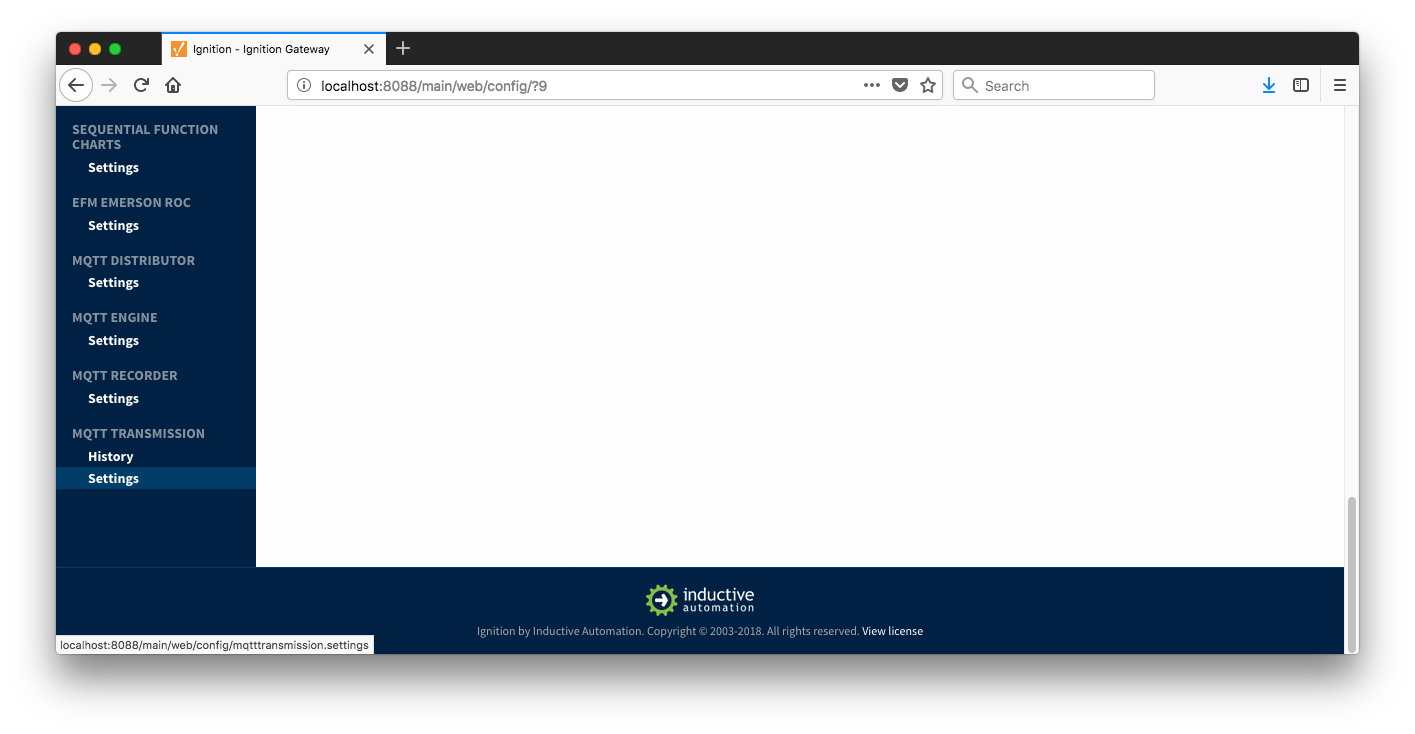Prerequisites
...
- Installing the Java Runtime Environment
- Installing Ignition
- Installing the following MQTT Modules on two Ignition systems
- Ignition System 1 (Central Ignition Gateway)
- MQTT Distributor
- MQTT Engine
- MQTT Recorder
- Ignition System 2 (Remote/Edge Ignition Gateway)
- MQTT Transmission
- EFM Emerson ROC driver module
Overview
...
The EFM Emerson ROC module is capable of polling history data from a ROC device based on a specified polling rate. With MQTT Transmission, this history data can be published as Sparkplug records to an MQTT server. Any client subscribed on Sparkplug RECORD messages can receive these objects. In addition, MQTT Engine when combined with MQTT Recorder can also receive these messages and store these objects in a configured Ignition database. The following drawing shows the general architecture used to do this. This tutorial outlines the process of getting history to the central Ignition gateway.

Sending ROC History to a Central Ignition Gateway
...
We must configure a total of five Cirrus Link modules on two different Ignition gateways to get history data flowing from an Emerson ROC device to a central database. These are:
...
The configuration of each of these modules is covered below based on the Ignition gateway they're installed on.
Central Ignition Gateway Setup
MQTT Distributor can be left in its default configuration. Note in a production system you would likely want to set up TLS especially if MQTT connections are using the Internet.
MQTT Engine can also be left in its default configuration.
MQTT Recorder requires that a database be set up in Ignition. That can be done as described in the 'Connect to a Database' section here. Note Ignition supports additional database types. For more detailed information about supported types, take a look at the information provided here. Once a database is set up, MQTT Recorder can be configured. Do so by opening the Ignition Gateway Web UI and browsing to the Configure tab at the top of the screen and then selecting 'MQTT Recorder Settings' as shown in the lower left below.
 Image Removed
Image Removed
Once there, select a Datasource as shown in the image below. This drop-down will be populated with any database connections you have set connections set up in Ignition. Optionally you can select , a Partition Period if you would like tables segregated can be selected to segregated tables by time periods.

At this point, the Central Ignition Gateway with MQTT Distributor, MQTT Engine, and MQTT Recorder is fully configured and ready to receive MQTT Sparkplug messages from the Remote/Edge Ignition Gateway. MQTT Distributor listens on TCP port 1883 by default for inbound MQTT connections. Make sure your the Operating System's Firewall, Antivirus, and Malware protection services allow inbound connections on port 1883/TCP before proceeding.
Remote/Edge Ignition Gateway Setup
With the Central Ignition Gateway ready to receive MQTT/Sparkplug RECORD objects, the EFM Emerson ROC and MQTT Transmission modules can be configured on the Remote/Edge Ignition Gateway.
...
Next the MQTT Transmission server configuration must be modified to point to the Central Ignition Gateway we set up earlier. To do so, in the Ignition Gateway Web UI browse to the Configure tab on the top and then to MQTT Transmission Settings in the lower left as shown below.
 Image Removed
Image Removed
Once in In the MQTT Transmission Settings configuration, click the Servers tab. Then click 'edit' on the Chariot SCADA MQTT Server definition. Modify the URL to match the URL of the Central Ignition Gateway you have configured. In this example, MQTT Distributor is installed on a Central Ignition Gateway at the IP address of 192.168.1.2. You should not have to modify any other parameters because MQTT Distributor and MQTT Engine have been left in their default state. Once you have modified the URL is modified to match your the configuration, you there should see be a '1 of 1' in the Connected column as shown below.
...
The next step is configuring the EFM Emerson ROC module. This is done as described in the Emerson ROC Configuration manual. In going through the basic setup and configuration for History configuration you must perform the following steps at a minimum.must be performed:
- Define the global TLP definitions available for all ROC devices in this Ignition instance
- Upload the Configuration Mappings for all ROC devices in this Ignition instance
- Upload the Periodic Mappings for all ROC devices in this Ignition instance
- Create the base device connection to the ROC
- The 'Minute History Scan Rate' in this connection configuration must be greater than zero to tell the driver to poll for minute history data at the specified rate
- The 'Periodic History Scan Rate' in this connection configuration must be greater than zero to tell the driver to poll for periodic history data at the specified rate
- The 'Daily History Scan Rate' in this connection configuration must be greater than zero to tell the driver to poll for daily history data at the specified rate
- Set the Sparkplug Group ID, Edge Node ID, and Device ID that represent this device. These will be used again later in the MQTT Transmission configuration.
- Specify the subset of global TLP definitions that this specific ROC uses
These steps can be skipped if you will not be configuring the driver to poll for TLP data.:
- Create TLP Template(s) which define groups of TLPs should be polled as a logical group
- Create TLP Poll Group(s) which specify the logical parameters associated with a given TLP Template
- Use Ignition designer to pull tags into a tag provider
...
![]()
![]()
![]()
![]()
![]()
![]()
![]()
![]()
![]()
![]()



